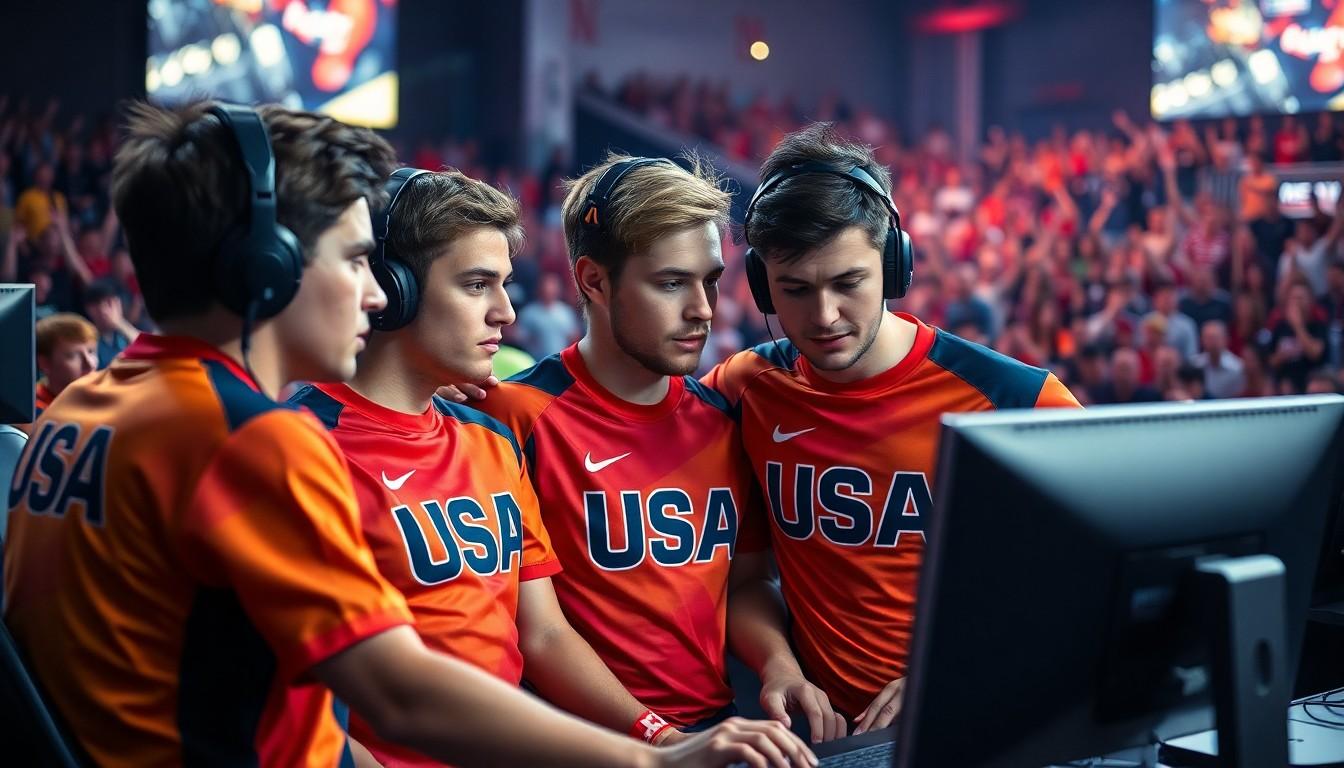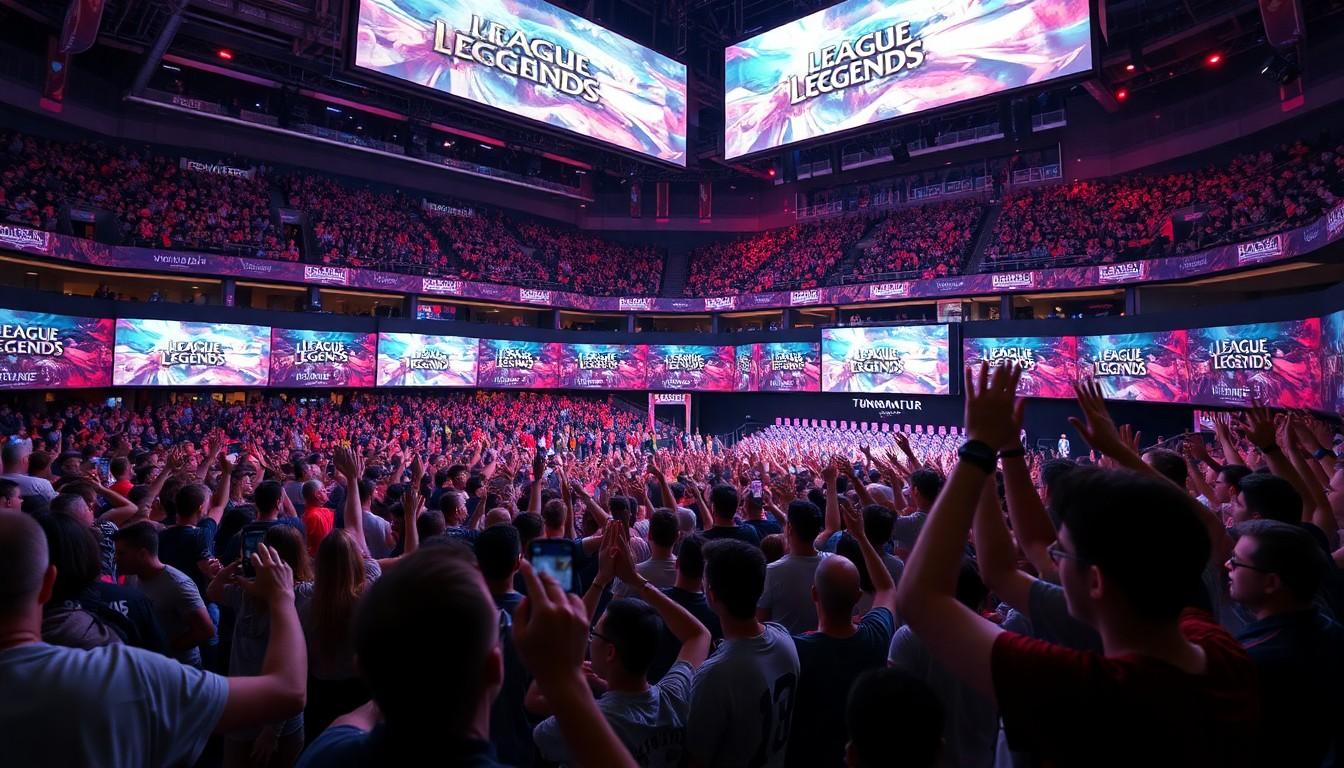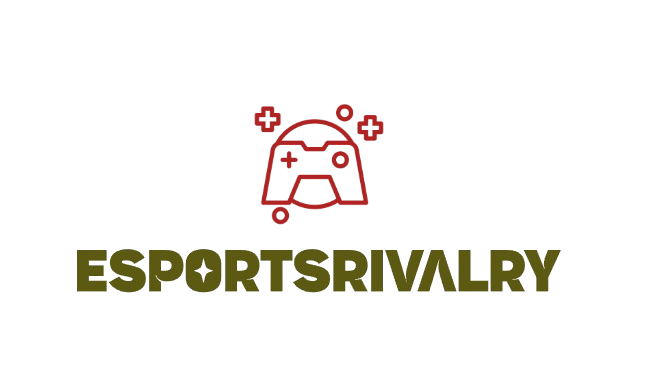
League of Legends Esports Teams: Unveiling the Secrets Behind Their Success and Rivalries
In the fast-paced world of esports, League of Legends teams are the rock stars, captivating millions with their strategic brilliance and jaw-dropping plays. Picture this: a group of gamers, huddled in a dimly lit room, fueled by energy drinks and dreams of glory, battling it out for the ultimate prize. It’s not just a game; it’s a spectacle that keeps fans on the edge of their seats, cheering for their favorite champions.
These teams aren’t just players—they’re brands, personalities, and sometimes, the subject of memes that go viral faster than a Baron steal. From the seasoned veterans to the fresh-faced rookies, each squad brings its own flavor to the Rift, making the competition as spicy as a dragon’s breath. Dive into the world of League of Legends esports teams and discover what makes them tick, why they matter, and how they’ve transformed gaming into a global phenomenon.
Overview Of League Of Legends Esports Teams
League of Legends esports teams stand at the forefront of competitive gaming, showcasing skill and teamwork. Each team consists of five players who specialize in roles such as top, jungle, mid, AD carry, and support. Teams compete in various leagues, such as the League of Legends Championship Series (LCS) in North America and the League of Legends European Championship (LEC) in Europe.
Star players often emerge, drawing significant attention and fanfare. Fans rally behind their favorite teams, creating vibrant communities that extend well beyond each match. The synergy between players plays a critical role in a team’s success. Communication, strategy, and trust significantly impact team dynamics.
Sponsorships elevate teams’ visibility, allowing them to establish themselves as brands. Prominent brands partner with these teams, significantly enhancing their reach and resources. Tournament structures, such as the World Championship, draw in millions of viewers, solidifying the global appeal of League of Legends esports.
Teams often invest in training facilities and coaching staff to optimize performance. Analytics and sports science influence training regimens, helping players refine their skills. Each competitive season presents new challenges, demanding adaptability and innovation from every team.
Members of successful teams become recognized figures in the esports community. Iconic rivalries develop over time, contributing to the emotional stakes of competitive matches. These teams continuously shape the landscape of esports while inspiring future generations of gamers.
Major League Of Legends Esports Teams

League of Legends features several major esports teams that stand out for their competitive prowess and dedicated fanbases.
Team Liquid
Team Liquid boasts a rich history in the competitive League of Legends scene. Founded in 2000, it has evolved into a powerhouse with multiple championship titles under its belt. The team is known for its strategic gameplay and strong roster of players, including notable stars like Jo “CoreJJ” Yong-in. Team Liquid’s investment in player development and support staff is evident through their advanced training facilities. Their participation in leagues like the LCS highlights their commitment to remaining at the top of the esports hierarchy.
T1
T1 represents one of the most iconic brands in esports. Originally founded as SK Telecom T1 in 2013, the team quickly gained fame by winning three World Championship titles. Known for its legendary player, Lee “Faker” Sang-hyeok, T1 has maintained a consistently high performance in both domestic and international competitions. The organization’s emphasis on teamwork and synergy is crucial to their success. They regularly utilize cutting-edge analytics to assess performance metrics, ensuring they stay competitive in the ever-evolving game landscape.
Fnatic
Fnatic is a trailblazer in the League of Legends ecosystem, established in 2004. It has secured multiple championships across various games, with League of Legends being a central focus. The team’s innovative strategies and dedication to excellence have garnered a loyal fanbase. Players like Elias “Upset” Lipp serve as key contributors to their success in competitions. Fnatic’s reputation also comes from its ability to build strong team dynamics, fostering an environment that enhances individual player performance while emphasizing collective goals.
Team Dynamics And Strategies
Team dynamics and strategies play a vital role in the performance of League of Legends esports teams. Effective collaboration among players leads to successful outcomes in matches.
Coaching Staff
Coaching staff provide essential guidance for player development and in-game strategies. Coaches analyze opponents, review gameplay footage, and develop comprehensive training plans. They instill discipline and adaptability, crucial for navigating the evolving meta. Many teams rely on analysts, who offer data-driven insights that inform tactical decisions. This support system enhances communication between players and coaches, fostering a culture of growth and learning within the team environment.
Player Roles
Player roles define the specific responsibilities each member assumes during a match. The top lane player focuses on controlling the lane while building resilience. Jungle players prioritize map control, ganking opportunities, and coordinating objectives. Mid laners excel at burst damage and roaming for map influence, while AD carries serve as the primary damage dealers late in the game. Support players enable team success by providing vision control, protection, and utility. Understanding these distinct roles enhances synergy and maximizes team effectiveness in competitions.
Evolution Of Esports Teams
Esports teams have transformed significantly since their inception. Early formations often lacked structure and resources, relying primarily on the passion of dedicated players. As popularity surged, teams began to adopt organized structures, with professional coaching staff and strategic playstyles becoming standard. This evolution allows teams to maintain competitive edge in dynamic environments.
Investment in training facilities grew essential. Teams like Team Liquid and Fnatic exemplify this shift by creating dedicated spaces for practice and analysis. Professional gamers now utilize advanced tools such as performance analytics and video analysis, fostering improvements in individual and team performance.
Furthermore, collaborations with sponsors expanded opportunities for financial support. Sponsorships have helped elevate brand visibility and provide essential resources, allowing teams to focus on improving gameplay. Major tournaments, particularly the League of Legends World Championship, have become significant platforms for showcasing skills, drawing audiences that exceed millions.
Rivalries among teams also intensified the competitive atmosphere. As iconic matchups emerged, fans rallied around their favorites, driving engagement and viewership. The unique narratives fostered by these rivalries contribute to the identity and culture surrounding esports.
Another key factor in the evolution of esports teams is the increasing recognition of players as unique talents. Iconic figures like Faker from T1 have raised the profile of professional gaming, inspiring new generations. Each player’s distinct role within the team adds nuance to strategies, enhancing overall synergy during competitions.
Investments in player development come alongside advancements in team dynamics. Coaches and analysts now play integral roles in formulating strategies that leverage each player’s strengths. Effective communication and collaboration among team members remain vital to achieving success in the competitive esports landscape.
Challenges Faced By Esports Teams
Esports teams encounter various challenges in the competitive landscape of League of Legends. Intense pressure to perform consistently impacts players’ mental and physical health. Managing these demands becomes crucial for maintaining peak performance and team cohesion.
Player burnout presents a significant issue. Frequent scrimmages and tournaments take a toll on mental well-being. Recognizing signs of burnout helps coaches and management take proactive steps to support their players.
Communication breakdowns can arise during gameplay. Effective collaboration among players significantly influences outcomes. Coaches play a vital role in ensuring clear strategies are communicated and understood by all team members.
Financial instability also poses challenges. Changes in sponsorship revenue or tournament winnings can affect team operations. Developing a sustainable financial model is essential for ongoing success and stability.
Adapting to the evolving meta in League of Legends requires continual learning. Teams must analyze patches and balance changes to maintain a competitive edge. Staying informed about these updates ensures teams remain relevant in high-stakes matches.
Moreover, recruitment of skilled players adds another layer of difficulty. Finding players who fit well into existing team dynamics and possess the necessary talents can be a lengthy process. Involvement in scouting and talent development programs can enhance a team’s depth and future success.
Finally, navigating relationships with fans and the wider community is necessary for brand building. Fan engagement can dramatically influence a team’s popularity and sponsorship opportunities. Maintaining a positive public image allows for stronger brand loyalty and fan support.
Conclusion
The landscape of League of Legends esports teams continues to evolve, showcasing a blend of talent, strategy, and community engagement. These teams not only compete at the highest levels but also shape the culture of gaming, inspiring fans around the globe.
As they navigate challenges like player burnout and financial instability, their resilience and adaptability remain key. The dedication to improving performance through training and analytics highlights their commitment to success.
With iconic rivalries and legendary players, the excitement surrounding these teams fuels a vibrant ecosystem that captivates millions. The future of League of Legends esports promises to be just as thrilling, with teams pushing boundaries and redefining what it means to be a professional gamer.
